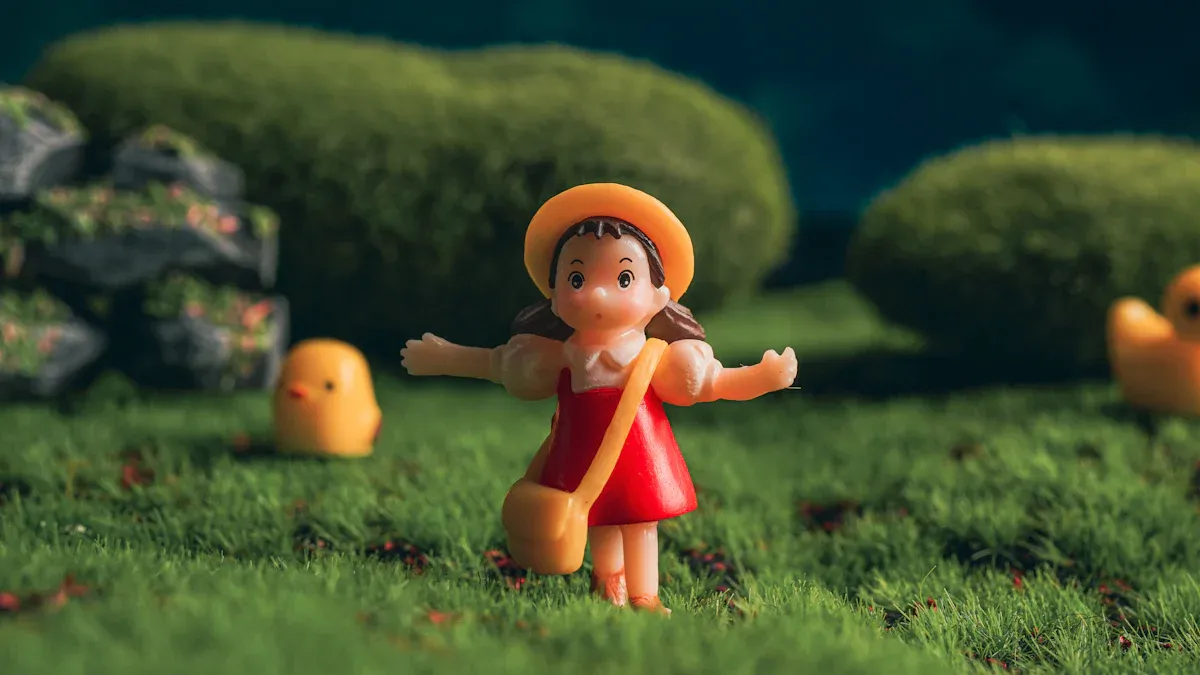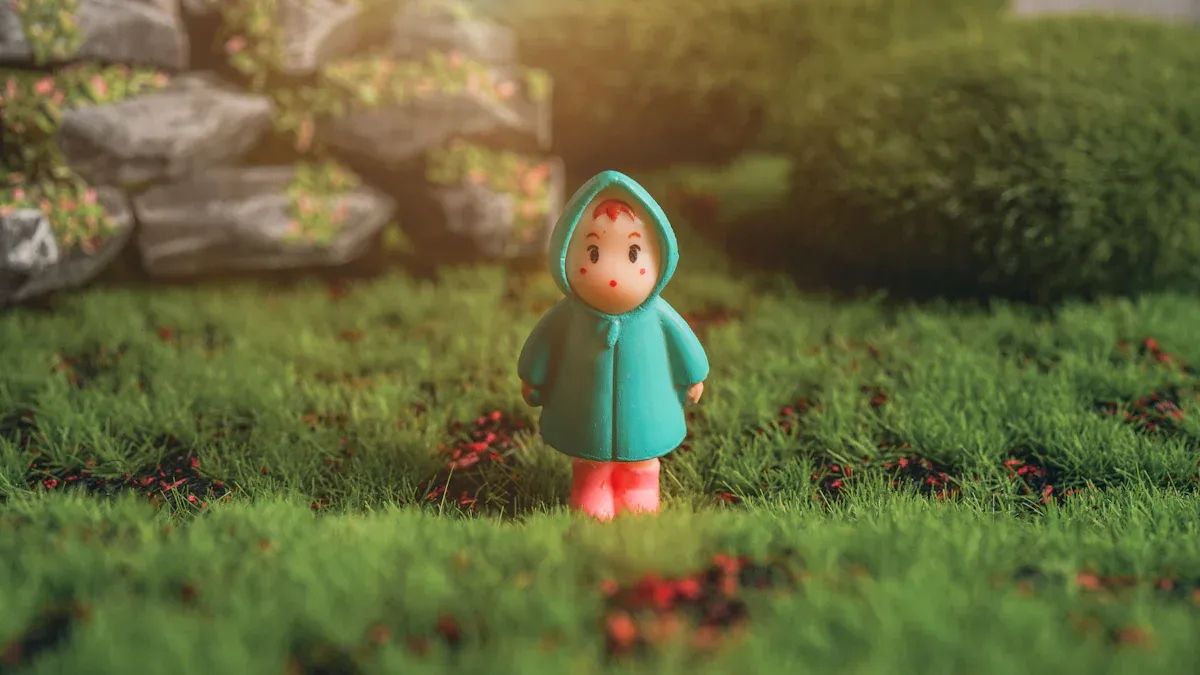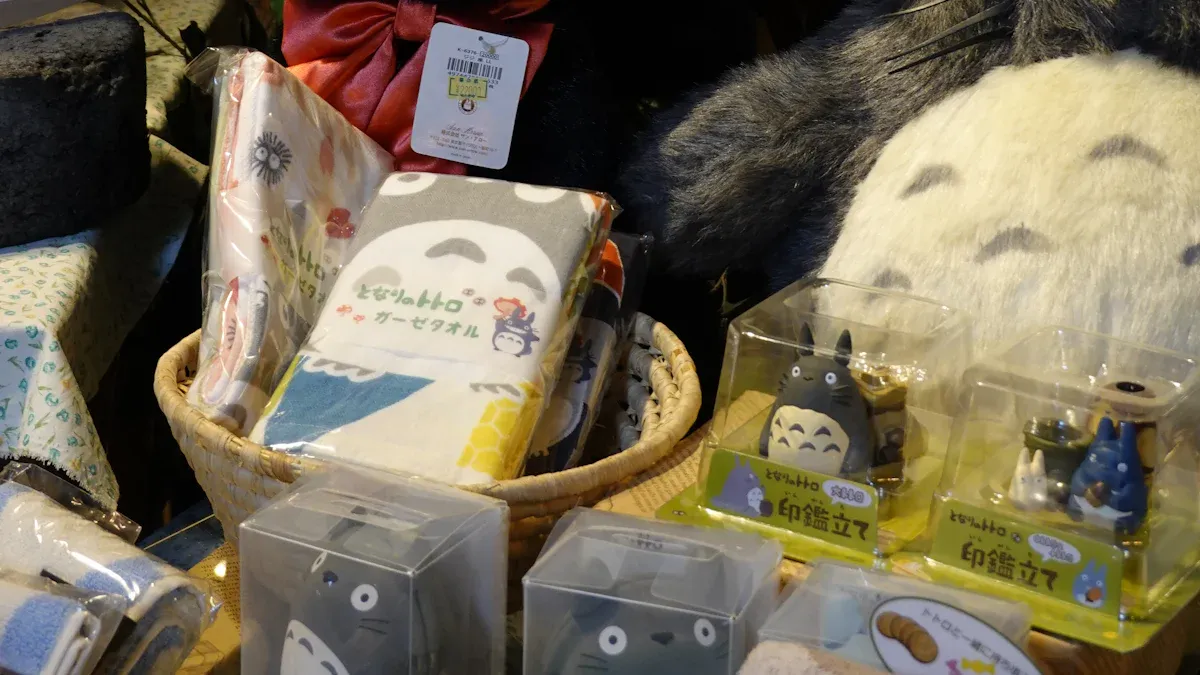Step-by-Step Guide to Creating Ghibli-Style Images with AI Tools


Have you ever wished you could create magical visuals that feel straight out of a Studio Ghibli movie? AI tools make it possible! With platforms like ChatGPT and art generators, you can craft stunning Ghibli-style images in no time. Did you know weekly active users of these tools recently surpassed 150 million? The demand for Ghibli-inspired designs has even overwhelmed servers, showing just how popular this art style has become. Ready to dive into this creative world? Let’s explore the Tutorial: Using Ghibli AI generator to bring your imagination to life.

Image Source: unsplash
Studio Ghibli’s art style is instantly recognizable. It’s not just about the visuals—it’s about the emotions they evoke. You’ve probably noticed how their films create worlds that feel alive and magical. This is thanks to a few key elements that define their aesthetic:
| Element | Description |
|---|---|
| Lush, Hand-Painted Backgrounds | Creating immersive, detailed worlds |
| Fluid Character Animation | Bringing personalities to life through subtle movements |
| Imaginative Character Designs | Blending the fantastical with the familiar |
| Attention to Everyday Details | Elevating mundane moments to cinematic beauty |
| Distinctive Color Palettes | Evoking mood and atmosphere through carefully chosen hues |
Studio Ghibli’s films are known for their hand-drawn animation and rich storytelling. These features have inspired countless artists and creators, including those using AI tools today. You’ll see AI-generated images mimicking soft colors, whimsical characters, and intricate details that feel straight out of a Ghibli movie.
This trend isn’t just about copying the style—it’s about celebrating the studio’s legacy. Ghibli’s reverence for nature and human emotion has shaped the way people view animation as an art form. Now, AI tools are helping you bring that same magic into your own creations.
Why does Ghibli’s art touch so many hearts? It’s simple: it connects with your emotions. Ghibli animation often reminds people of their childhood memories. The dreamy landscapes and relatable characters create a sense of nostalgia that’s hard to ignore.
A recent study found that emotionally connected customers have a 306% higher lifetime value. This shows how powerful emotional resonance can be. When you look at a Ghibli-style image, you’re not just seeing art—you’re feeling something. AI-generated images tap into this emotional connection, letting you project your feelings onto the art.
Experts predict that by 2026, brands investing in emotionally adaptive experiences will outperform competitors in customer retention. This highlights the growing importance of emotional engagement. Ghibli’s art style is a perfect example of how visuals can create lasting emotional ties. Whether it’s the warmth of a sunset or the charm of a tiny village, these images make you feel like you’re part of the story.
Creating Ghibli-style images with AI tools is easier when you have the right resources. From crafting prompts to refining your final image, these tools will help you every step of the way.
Before generating your Ghibli-style masterpiece, you need a well-crafted prompt. This is where AI tools like ChatGPT shine. They help you create detailed, imaginative prompts that guide the art generator to produce the exact style you want.
Here’s why AI tools are so effective for crafting prompts:
| Feature/Advantage | Description |
|---|---|
| Efficiency | AI generates content much faster than humans, saving you time. |
| Consistency | AI maintains a uniform writing style, reducing errors. |
| Customizability | You can tailor AI prompts to match specific needs, like a whimsical or magical tone. |
To get the best results, fine-tune your prompts. For example:
Using ChatGPT in your workflow makes the "Tutorial: Using Ghibli AI generator" process smoother and more efficient.
Once you’ve crafted the perfect prompt, it’s time to bring it to life with an AI art generator. These tools transform your ideas into stunning visuals. Each platform has its strengths, so choosing the right one depends on your project:
For example, if you want a magical forest scene with intricate details, DALL·E might be your best bet. But if you’re aiming for a more abstract, painterly look, MidJourney could be the way to go. Experiment with these tools to see which one aligns with your vision.
Even after generating your image, you might want to refine it further. Post-editing tools like Photoshop and Canva can help you add those final touches.
Photoshop: This is the go-to tool for professional-grade editing. You can:
Canva: If you’re new to editing, Canva is a user-friendly option. It offers:
Both tools are excellent for fine-tuning your Ghibli-style images. Photoshop is better for detailed work, while Canva is great for beginners or small projects. Adding these tools to your "Tutorial: Using Ghibli AI generator" workflow ensures your final image looks polished and professional.

Image Source: unsplash
Before diving into AI tools, take a moment to study the essence of Studio Ghibli’s art. Understanding the style is key to creating images that feel authentic and magical. Ghibli’s visuals are more than just pretty pictures—they tell stories, evoke emotions, and transport you to whimsical worlds.
Start by watching a few Ghibli classics like My Neighbor Totoro or Spirited Away. Pay attention to the details. Notice how the backgrounds are lush and hand-painted, how the characters move fluidly, and how the colors set the mood. You’ll see that even the smallest details, like a teacup on a table or a breeze through the trees, are given life.
If you’re short on time, look up Ghibli-style art galleries online. Pinterest and Instagram are great places to find inspiration. Save a few images that resonate with you. These will serve as references when you start crafting your prompts and generating images.
Tip: Focus on the emotions you want your image to evoke. Is it a sense of wonder, nostalgia, or serenity? Knowing this will guide your creative process.
Once you’ve immersed yourself in the Ghibli aesthetic, it’s time to craft your prompts. A well-written prompt is the foundation of a great AI-generated image. ChatGPT can help you create detailed and imaginative prompts that capture the Ghibli vibe.
Here’s how to get started:
Here’s an example of a prompt you might create with ChatGPT:
“Imagine a peaceful countryside inspired by Studio Ghibli. The scene features rolling green hills, a small cottage with smoke curling from the chimney, and a winding dirt path lined with wildflowers. The sky is painted in soft pastel hues of pink and orange as the sun sets.”
Pro Tip: If your first prompt doesn’t give you the results you want, tweak it. Adjust the details, add more context, or change the tone. ChatGPT makes it easy to refine your ideas.
Now comes the fun part—bringing your vision to life! With your prompt ready, you can use AI art tools like MidJourney, DALL·E, or Stable Diffusion to generate your Ghibli-style image. Each tool has its strengths, so choose the one that best fits your needs.
Here’s a quick guide to using these tools:
For example, if you’re using DALL·E, simply paste your prompt into the input box and hit “Generate.” In seconds, you’ll have a stunning image that captures the Ghibli aesthetic. If the result isn’t quite right, don’t worry. AI tools allow you to iterate. Adjust your prompt, try different tools, or combine elements from multiple images.
Did You Know? A recent campaign using ImagineArt’s API generated over 10,000 Ghibli-style images in just 72 hours, resulting in 27 million impressions. This shows how powerful these tools can be when used effectively.
To measure the quality of your generated images, consider these performance indicators:
| Performance Indicator | Description |
|---|---|
| Inception Score (IS) | Reflects quality and diversity by comparing conditional label distribution to marginal distribution of generated images. |
| Fréchet Inception Distance (FID) | Measures the distance between deep feature distributions of generated and real image sets. |
| Structural Similarity Index Measure (SSIM) | Assesses similarity between generated and real images on pixel level, considering luminance, contrast, and structure. |
Tip: Don’t hesitate to experiment. Try different tools, adjust your prompts, and explore various styles. The more you practice, the better your results will be.
Creating Ghibli-style images with AI tools is an exciting process, but the first result isn’t always perfect. Refining and iterating are essential steps to improve your images and get closer to your vision. Think of it as polishing a rough gem until it shines.
Start by evaluating the initial image generated by the AI. Ask yourself: Does it capture the mood and details you imagined? If something feels off, don’t worry. You can tweak your prompts and try again. Small changes, like adding more descriptive words or adjusting the tone, can make a big difference.
Here’s how you can refine your results effectively:
To measure your progress, you can use tools like the Inception Score (IS) or Fréchet Inception Distance (FID). These metrics help you evaluate the quality and diversity of your images. But don’t forget the human touch! Trust your instincts and ask for feedback from others. Sometimes, a fresh pair of eyes can spot things you might miss.
Pro Tip: Save each version of your image. This way, you can track your progress and even combine elements from different iterations to create the perfect result.
Refining your images is all about patience and creativity. The more you experiment, the better you’ll get at crafting prompts and guiding the AI. With practice, you’ll master the art of using the Tutorial: Using Ghibli AI generator to create stunning visuals.
Even after refining your AI-generated image, you might want to add some personal touches. Post-editing tools like Photoshop or Canva can help you take your creation to the next level. Think of this step as adding the final brushstrokes to a painting.
Here’s how you can enhance your image during post-editing:
If you’re new to editing, Canva is a beginner-friendly option. It offers simple controls for adjusting colors and adding elements. For more advanced edits, Photoshop gives you greater control and flexibility.
Did You Know? Many professional artists use a combination of AI tools and manual editing to create their work. This hybrid approach allows for both efficiency and a personal touch.
Post-editing isn’t mandatory, but it can make your image stand out. Whether you’re creating art for fun or a project, these final touches can bring your vision to life. Don’t be afraid to experiment and let your creativity shine.
When working with AI art tools, you might run into a few hiccups. Don’t worry—these are common and easy to address once you know what to look for. One major issue is the ethical concern surrounding how AI models are trained. Many tools use datasets that include art without the creators’ consent. This raises questions about fairness and originality. While you can’t control the training data, you can ensure your prompts and outputs respect the spirit of creativity.
Another challenge is bias in the AI’s outputs. For example, some tools may reinforce stereotypes. If you prompt an AI with “CEO,” it might generate mostly images of white men. This happens because the training data often reflects societal biases. To counter this, try adding diversity to your prompts. For instance, specify “a female CEO in a modern office” or “a diverse group of leaders.”
Finally, you might notice that some generated images feel repetitive or lack detail. This usually means the prompt needs more specificity. Adding descriptive words or context can help the AI produce richer, more varied results.
Tip: If you’re stuck, tweak your prompt and test different tools. Iteration is key to overcoming these challenges.
Crafting the perfect prompt is like giving the AI a detailed map—it helps guide the tool to your desired outcome. The best prompts are clear, specific, and structured. Here are some tips to get you started:
Testing different prompts is essential. Even small changes can lead to big improvements. For instance, adding “whimsical” or “nostalgic” to your description can completely transform the mood of your image. Think of it as a trial-and-error process that helps you discover what works best.
Pro Tip: Structure your prompt like a story. Include a setting, characters, and mood to make it more engaging.
Lighting, colors, and composition are the secret ingredients that bring your Ghibli-style images to life. Start by experimenting with lighting. Soft, diffused light creates a dreamy atmosphere, while dramatic shadows add depth. You can include phrases like “golden hour sunlight” or “gentle moonlight” in your prompt to guide the AI.
Colors play a huge role in setting the mood. Ghibli-style art often uses warm, earthy tones for cozy scenes or vibrant greens and blues for nature. Be specific in your prompts. For example, “a vibrant meadow with shades of emerald green and sky blue.”
Composition ties everything together. Think about the placement of elements in your scene. A balanced composition, like a character framed by trees or a winding path leading to a cottage, creates visual harmony. If the AI struggles with this, you can refine the image during post-editing.
Did You Know? Ghibli artists often use the “rule of thirds” to create balanced and visually appealing scenes. You can apply this principle to your AI-generated images too!
By playing with these elements, you’ll unlock endless creative possibilities. Don’t be afraid to experiment—you might just stumble upon something magical.
When creating Ghibli-style art with AI, it’s important to honor the legacy of Studio Ghibli and its creators. Hayao Miyazaki, the studio’s co-founder, has expressed strong feelings about the misuse of technology in art.
"Whoever creates this stuff has no idea what pain is… I am utterly disgusted… I strongly feel that this is an insult to life itself." - Hayao Miyazaki
This quote reminds you that art is deeply personal and reflects the artist’s emotions and experiences. AI tools can mimic the style, but they don’t capture the soul behind the work. Respecting the original means acknowledging the effort and creativity that went into crafting these masterpieces.
The ethical concerns surrounding AI-generated art also highlight the importance of giving credit where it’s due. Using AI to replicate Ghibli’s aesthetic without proper acknowledgment can exploit the creativity of the original artists. Instead, focus on celebrating their influence while adding your own unique touch.
AI tools are powerful, but they come with responsibilities. Misusing them can lead to serious consequences, especially when it comes to plagiarism. Here are some documented cases that show why responsible use matters:
| Misuse of AI Tools | Consequences |
|---|---|
| Unauthorized use on assessments | Violations of academic integrity policies |
| Failure to cite appropriately | Potential disciplinary action |
| Submission of fully AI-generated work | Violations as outlined in the Code of Conduct |
If AI is banned in certain contexts, like assignments, any use would be considered misuse. Even brainstorming with AI might fall into a gray area depending on the rules. Always check the guidelines for your specific situation to avoid crossing ethical boundaries.
To stay on the right side of ethics, use AI as a tool to enhance your creativity rather than replace it. For example, you can brainstorm ideas or refine your prompts, but the final work should reflect your own effort and originality.
AI can be a great partner in your creative journey, but the magic happens when you combine its capabilities with your own imagination. Here’s a step-by-step approach to encourage originality in your AI-generated art:
By following these steps, you can create art that feels personal and authentic. AI is just one part of the process—it’s your creativity that brings the work to life. So, experiment, take risks, and let your imagination soar.
Creating Studio Ghibli-style images with AI tools is an exciting way to explore your creativity. By following a step-by-step guide, you can focus on one aspect at a time, making it easier to see how each change improves your results. Using reference images can also help you refine your composition and capture the magical Ghibli aesthetic.
Don’t forget to save your prompts and successful settings. Building a library of techniques will make future projects even better. Treat each image as a draft, and enjoy the process of refining it into something truly special. With practice and imagination, you’ll bring your own whimsical worlds to life!
It depends on your needs! Tools like MidJourney are great for dreamy, artistic visuals, while DALL·E excels at intricate details. If you want consistent results, try Stable Diffusion. Experiment with each to find your favorite.
Be specific! Describe the scene in detail, like “a magical forest with glowing mushrooms and soft sunlight.” Use emotional words like “whimsical” or “serene.” Don’t forget to test and tweak your prompts for better results.
It depends on the tool’s licensing terms. Some platforms allow commercial use, while others don’t. Always check the terms of service for the AI tool you’re using to avoid legal issues.
Not always, but editing can enhance your work. Tools like Photoshop or Canva let you adjust colors, add details, or clean up rough edges. Post-editing adds a personal touch and makes your image stand out.
Yes, as long as you respect Studio Ghibli’s legacy. Use AI to celebrate their influence, not copy their work. Add your unique creativity to ensure your art feels original and honors the spirit of Ghibli.